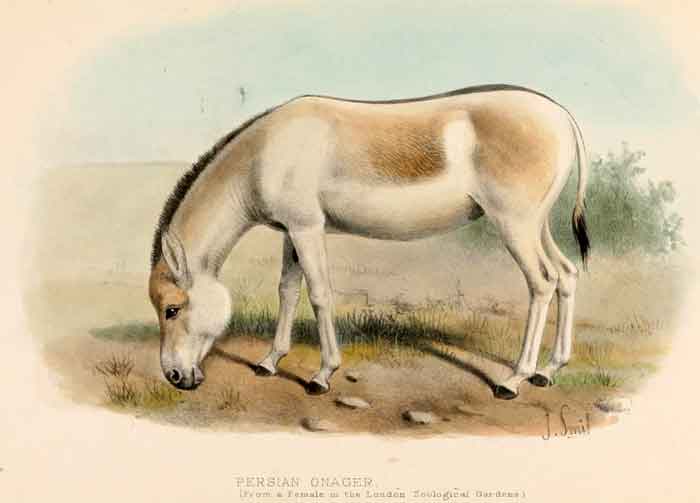
Superregnum: Eukaryota
Cladus: Unikonta
Cladus: Opisthokonta
Cladus: Holozoa
Regnum: Animalia
Subregnum: Eumetazoa
Cladus: Bilateria
Cladus: Nephrozoa
Superphylum: Deuterostomia
Phylum: Chordata
Subphylum: Vertebrata
Infraphylum: Gnathostomata
Megaclassis: Osteichthyes
Cladus: Sarcopterygii
Cladus: Rhipidistia
Cladus: Tetrapodomorpha
Cladus: Eotetrapodiformes
Cladus: Elpistostegalia
Superclassis: Tetrapoda
Cladus: Reptiliomorpha
Cladus: Amniota
Cladus: Synapsida
Cladus: Eupelycosauria
Cladus: Sphenacodontia
Cladus: Sphenacodontoidea
Cladus: Therapsida
Cladus: Theriodontia
Subordo: Cynodontia
Infraordo: Eucynodontia
Cladus: Probainognathia
Cladus: Prozostrodontia
Cladus: Mammaliaformes
Classis: Mammalia
Subclassis: Trechnotheria
Infraclassis: Zatheria
Supercohors: Theria
Cohors: Eutheria
Infraclassis: Placentalia
Cladus: Boreoeutheria
Superordo: Laurasiatheria
Cladus: Euungulata
Ordo: Perissodactyla
Superfamilia: Equoidea
Familia: Equidae
Subfamilia: Equinae
Tribus: Equini
Genus: Equus
Species: Equus hemionus
Subspecies: Equus hemionus onager
Name
Equus hemionus onager Boddaert, 1785
Synonyms
Equus onager Boddaert, 1785
References
Boddaert, P. 1785. Elenchus animalium, volumen I: sistens quadrupedia huc usque nota, eorumque varietates: ad ductum naturae, quantum fieri potuit disposita. 174 pp., Roterodami:Apud C.R. Hake, 1784. p.160 #3 BHL Reference page.
Equus hemionus onager in Mammal Species of the World.
Wilson, Don E. & Reeder, DeeAnn M. (Editors) 2005. Mammal Species of the World – A Taxonomic and Geographic Reference. Third edition. ISBN 0-8018-8221-4.
Equus onager – Taxon details on Integrated Taxonomic Information System (ITIS).
Vernacular names
العربية: أخدر فارسي
Deutsch: Persischer Halbesel / Onager
English: Persian Onager
עברית: פרא פרסי
magyar: Perzsa onager
italiano: L'emione persiano od onagro
lietuvių: Persiniu onagru
latviešu: Persijas onagrs
Nederlands: Perzische wilde ezel
norsk: Iransk villesel
polski: Onager perski
русский: Онагр
srpskohrvatski / српскохрватски: Perzijski kulan / Персијски кулан
The Persian onager (Equus hemionus onager), also called the Persian wild ass or Persian zebra, is a subspecies[3] of onager (Asiatic wild ass) native to Iran (Persia). It is listed as Endangered,[1] with no more than 600 individuals left in the wild and only 30 individuals living within North American institutions.
Contents
1 Taxonomy and history
2 Habitat and distribution
3 Threats
4 Conservation status
4.1 In captivity
4.2 Introduction projects
5 References
Taxonomy and history
A drawing of a Persian onager.
The Persian onager is also simply named gur (گور) meaning "zebra" in Persian. "Onager" is from the Greek ὄναγρος (onagros), meaning "wild ass".
Sometimes, the term "onager" is reserved specifically for this subspecies.[3] However, as the whole species of the Asiatic wild ass is known simply as onager, it now also serves as the Persian wild ass's scientific name, as well (Equus hemionus onager). Information on the basic biology of the subspecies and how it differs from others is lacking, which hampers conservation efforts.[3]
Onagers used to be numerous from the Middle East to China. However, until the 19th century, their population has been reduced from several thousand to a few thousand. Currently, more than 600 Persian onagers are living in the wild.
Habitat and distribution
Persian wild asses are known to inhabit mountain steppes, semidesert, or desert plains. They are usually found in desert steppes. Their largest population is found in Khar Turan National Park.
Threats
Introduced onagers in the Negev Mountains, Israel
The Persian onager is listed as endangered by IUCN Red List, as it is close to extinction. Currently, poaching for meat and hides, competition with livestock, and drought are the greatest threats to this species.
Conservation status
A Persian onager in the Yotvata Hai-Bar Nature Reserve, Israel
Asiatic wild asses are legally highly protected; hunting them is forbidden. The European Endangered Species Programme reserved for European Association of Zoos and Aquaria is helping save the Persian onager from extinction, by breeding them in captivity and reintroducing them to their former ranges, including in new locations once inhabited by Syrian onagers in Saudi Arabia, Israel, and Ukraine.
On August 30, 2014, Iranian officials reported that three Persian onagers were born in Khar Turan National Park reserve near Shahroud in Semnan province, where it also has the largest populations of the equids.[4]
In captivity
A few Persian onagers are breeding in various zoos of Europe and the Middle East, such as Chester, Whipsnade, and Yotvata. The Smithsonian Conservation Biology Institute in Front Royal, Virginia, also breeds Persian onagers, including two born in June 2015. The first ever artificial insemination of any wild equid was in this species, and resulted in two Persian Onager foals at the Wilds conservation center in Southeastern Ohio, in collaboration with experts from the Smithsonian Conservation Biology Institute.
Introduction projects
Since 2003, Persian onagers have been introduced in Saudi Arabia, where the Syrian wild ass (E. h. hemippus) once lived. Introduced Persian onagers live in deserts foraging on grasses and branches or woodier plant material in dry seasons.[5]
In 1968, 11 Persian and Turkmenian onagers were flown from their countries to Israel in exchange for Israeli gazelles. These were bred in captivity at the Hai Bar Yotvata wildlife sanctuary. Together, they bred a few Persian/Turkmenian hybrids in Israel. Offspring were introduced into the wild in the Negev Mountains area, intended to replace the local subspecies gone extinct. The introduced onagers have since established a stable population around 200 individuals.
References
Hemami, M.; Kaczensky, P.; Lkhagvasuren, B.; Pereladova, O.; Bouskila, A. (2015). "Equus hemionus ssp. onager". IUCN Red List of Threatened Species. 2015: e.T7966A3144941. doi:10.2305/IUCN.UK.2015-4.RLTS.T7966A3144941.en. Retrieved 11 November 2021.
"Appendices | CITES". cites.org. Retrieved 2022-01-14.
"Asiatic Wild Ass Equus hemionus". IUCN.org. Gland, Switzerland: IUCN/SSC Equid Specialist Group. Archived from the original on 2012-12-20.
MNA. "3 Persian zebras born in Semnan's National Park". en.mehrnews.com. Mehr News Agency. Retrieved 30 August 2014.
Descriptions and articles about the Persian Onager (Equus hemionus onager), EOL.org, retrieved 7 February 2015
Retrieved from "http://en.wikipedia.org/"
All text is available under the terms of the GNU Free Documentation License

